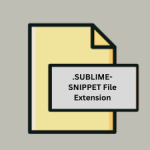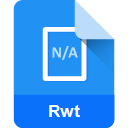.TP3 File Extension

Harvard Graphics DOS Template File
| Developer | Harvard Graphics |
| Popularity | |
| Category | Page Layout Files |
| Format | .TP3 |
| Cross Platform | Update Soon |
What is an TP3 file?
The .TP3 file extension is associated with Harvard Graphics, a graphics and presentation program initially designed for MS-DOS. This file format is used for storing templates, which include predefined graphic elements, layouts, and formatting settings to assist users in creating consistent and professional presentations.
More Information.
Harvard Graphics was one of the first programs to offer a comprehensive suite of tools for creating business graphics on personal computers. The initial purpose of the .TP3 file was to provide a reusable template that could streamline the creation of slides and charts, ensuring uniformity and saving time for users by avoiding repetitive design tasks.
Origin Of This File.
The .TP3 file format originated with Harvard Graphics, a pioneering software for business graphics and presentations developed by Software Publishing Corporation (SPC). It was first introduced in the late 1980s, targeting professionals needing to create visual aids for reports, presentations, and other business documentation.
File Structure Technical Specification.
File Structure: The .TP3 file format typically contains metadata, graphical objects, layout information, and predefined styles. The structure is proprietary to Harvard Graphics and is designed to be read and rendered by the Harvard Graphics software.
Technical Specifications:
- File Extension: .TP3
- MIME Type: application/octet-stream (general binary file, not specific to TP3)
- Encoding: Binary format, not human-readable
- Compatibility: Primarily with Harvard Graphics for DOS
How to Convert the File?
Windows
- Install DOSBox:
- Download and install DOSBox from DOSBox’s official website.
- Install Harvard Graphics:
- Obtain a copy of Harvard Graphics for DOS and install it within DOSBox following the installation instructions.
- Open .TP3 File in Harvard Graphics:
- Launch DOSBox.
- Mount the directory containing your Harvard Graphics and .TP3 files using the command.
- Navigate to the Harvard Graphics executable and run it.
- Open the .TP3 file within Harvard Graphics.
- Export or Save As:
- Use Harvard Graphics to export or save the template to a different format supported by the software, such as .CGM (Computer Graphics Metafile), if available.
- Use Conversion Tools:
- Search for third-party conversion tools that support .TP3 files. These tools might allow you to convert .TP3 to more modern formats like .PNG, .JPG, or .PDF.
Linux
- Install DOSBox:
- Install DOSBox using your package manager.
- Install Harvard Graphics:
- Follow the same steps as on Windows to install Harvard Graphics within DOSBox.
- Open and Export .TP3 File:
- Use DOSBox to run Harvard Graphics, open the .TP3 file, and export it to a different format, if supported.
- Alternative Tools:
- Consider using Wine to run Windows-based conversion tools that might support .TP3 files.
Mac
- Install DOSBox:
- Download and install DOSBox for Mac from DOSBox’s official website.
- Install Harvard Graphics:
- Follow the same procedure as for Windows to install Harvard Graphics within DOSBox.
- Open and Export .TP3 File:
- Run Harvard Graphics in DOSBox, open the .TP3 file, and export it.
- Virtual Machine:
- Use virtualization software like Parallels or VirtualBox to run a Windows environment and perform the conversion steps as you would on a native Windows system.
Android
- Install aDosBox:
- Download and install aDosBox from the Google Play Store.
- Set Up Harvard Graphics:
- Transfer the Harvard Graphics installation files to your Android device.
- Run Harvard Graphics:
- Use aDosBox to run Harvard Graphics and open the .TP3 file.
- Export the File:
- Follow the same steps to export the file within Harvard Graphics.
iOS
- Install iDOS:
- If available, download and install iDOS from the App Store.
- Set Up Harvard Graphics:
- Transfer the necessary Harvard Graphics files to your iOS device.
- Run Harvard Graphics:
- Use iDOS to open and run Harvard Graphics.
- Export the File:
- Export the .TP3 file using the steps within Harvard Graphics.
Other Platforms
- Cloud-Based Solutions:
- Remote Desktop Solutions:
- Access a remote desktop where Harvard Graphics is installed and perform the conversion.
General Tips
- File Conversion Services:
- Look for online file conversion services that might support .TP3 files. These services often provide simple upload-and-convert features.
- Community Forums:
- Participate in forums or communities dedicated to legacy software. Members might have tools or scripts specifically for converting Harvard Graphics files.
Advantages And Disadvantages.
Advantages:
- Consistency: Ensures a consistent look and feel across presentations.
- Time-Saving: Speeds up the creation process by providing predefined elements.
- Professional Quality: Helps in maintaining a high standard of presentation quality.
Disadvantages:
- Proprietary Format: Limited to Harvard Graphics, restricting compatibility with other software.
- Outdated: Harvard Graphics and its file formats are largely obsolete, with limited support on modern systems.
- Inflexibility: Customizing templates might be less flexible compared to creating designs from scratch in more modern software.
How to Open TP3?
Open In Windows
- Harvard Graphics for DOS: Can run using DOS emulators like DOSBox.
- Conversion Tools: Use software that can convert .TP3 files to more modern formats.
Open In Linux
- DOSBox: Run Harvard Graphics for DOS within DOSBox.
- Wine: Possible, but not guaranteed, to run a Windows version of Harvard Graphics under Wine.
Open In MAC
- DOSBox: Use DOSBox to emulate DOS and run Harvard Graphics.
- Virtual Machines: Run a Windows environment within a virtual machine and use Harvard Graphics there.
Open In Android
aDosBox: Use the aDosBox app to emulate DOS and run Harvard Graphics.
Open In IOS
Emulate DOS using iDOS (availability varies due to App Store restrictions).
Open in Others
Use cloud-based DOS emulators or remote desktop solutions to access a system with Harvard Graphics installed.













